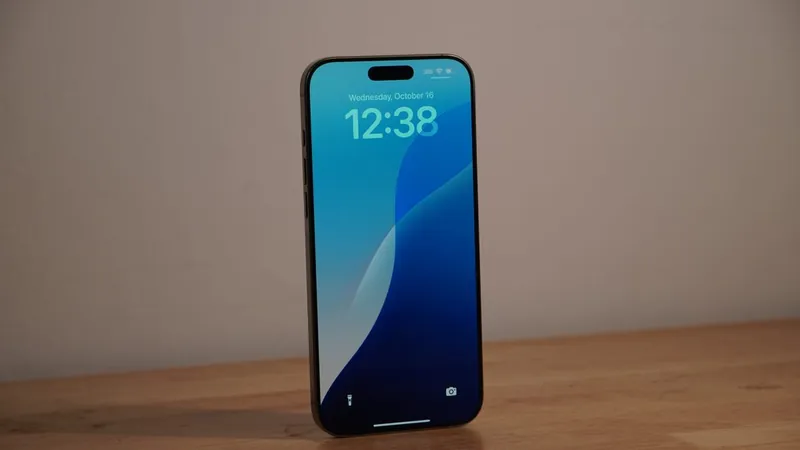
Revolutionary Technique to Repair Spinal Cord Injuries Using 'Cellular Bridges'
2025-04-21
Author: Wei Ling
Groundbreaking Approach Could Transform Spinal Cord Recovery
COLUMBUS, Ohio – A new wave in spinal cord repair is on the horizon, utilizing the remarkable adaptability of tiny cells within our blood vessels. Exciting findings reveal that manipulating these cells, known as pericytes, may unveil a potential pathway for spinal cord regeneration.
Transforming Injury Sites with Innovative Treatments
In recent mouse studies, researchers injected a unique recombinant protein at the site of spinal cord injuries. This treatment prompted the pericytes' transformation, triggering them to form "cellular bridges" that facilitate the regrowth of axons—the vital connections that allow nerve signals to travel.
A Single Injection, Major Impact!
Strikingly, mice that received just one injection of this groundbreaking growth-factor protein exhibited significant axon regrowth and even regained movement in their hind limbs. Preliminary tests with human cells suggest that these remarkable effects extend beyond just mouse models.
Beyond Spinal Cord Repair: A Broader Implication
Andrea Tedeschi, the senior author and an associate professor at The Ohio State University College of Medicine, noted, "This finding isn’t limited to spinal injuries—it offers insights into brain injuries, strokes, and neurodegenerative diseases as well." The team's research highlights that restoring blood vessel integrity is crucial for recovering neurological functions after a spinal cord injury.
Reassessing Pericytes: From Hindrance to Healing Heroes
Contrary to previous beliefs that pericytes hinder spinal recovery, this study’s authors found that exposure to the protein PDGF-BB transformed pericytes into supportive agents for axon growth. Their flexible nature allows them to react to environmental cues, a discovery that might revolutionize our approach to spinal injuries.
Paving the Way with 'Cellular Carpets'
Using cell-culture experiments, researchers simulated an environment where pericytes were prompted to form a supporting layer for adult mouse sensory neurons. This engineered setup encouraged nearly optimal axon growth, demonstrating the potency of combining PDGF-BB with pericytes.
Promising Results from Animal Trials
Following spinal cord injuries in animals, the team observed that administering PDGF-BB one week post-injury—analogous to nine months for humans—resulted in substantial axon regeneration. Researchers noted how these cellular bridges enabled the regenerating axons to bypass the injury site itself.
Outcomes that Herb Cancer's Legacy?
Electrophysiological tests indicated that treated mice regained better control of their hind limbs and notably experienced diminished pain responses—transformative results that could lead to less suffering post-injury. Additionally, analysis revealed that while some cellular markers changed, the pericytes retained their core identity, potentially opening new avenues for therapeutic advancements.
Looking Ahead: A Holistic Approach to Spinal Cord Recovery
This research suggests a multifaceted strategy could enhance spinal recovery. Combining pharmacological treatments that target neuronal properties with methods like those explored in this study may create a more favorable environment for nerve regeneration.
Future Research Directions
The team plans further investigations to optimize the timing, dosage, and delivery mechanisms of PDGF-BB treatment, ensuring maximum efficacy.
Conclusion
This study opens new doors for spinal cord injury treatment and hints at a future where recovery from debilitating injuries could become a tangible reality. With the backing of esteemed institutions, promising advancements are on the horizon that may redefine neurological recovery.




 Brasil (PT)
Brasil (PT)
 Canada (EN)
Canada (EN)
 Chile (ES)
Chile (ES)
 Česko (CS)
Česko (CS)
 대한민국 (KO)
대한민국 (KO)
 España (ES)
España (ES)
 France (FR)
France (FR)
 Hong Kong (EN)
Hong Kong (EN)
 Italia (IT)
Italia (IT)
 日本 (JA)
日本 (JA)
 Magyarország (HU)
Magyarország (HU)
 Norge (NO)
Norge (NO)
 Polska (PL)
Polska (PL)
 Schweiz (DE)
Schweiz (DE)
 Singapore (EN)
Singapore (EN)
 Sverige (SV)
Sverige (SV)
 Suomi (FI)
Suomi (FI)
 Türkiye (TR)
Türkiye (TR)
 الإمارات العربية المتحدة (AR)
الإمارات العربية المتحدة (AR)